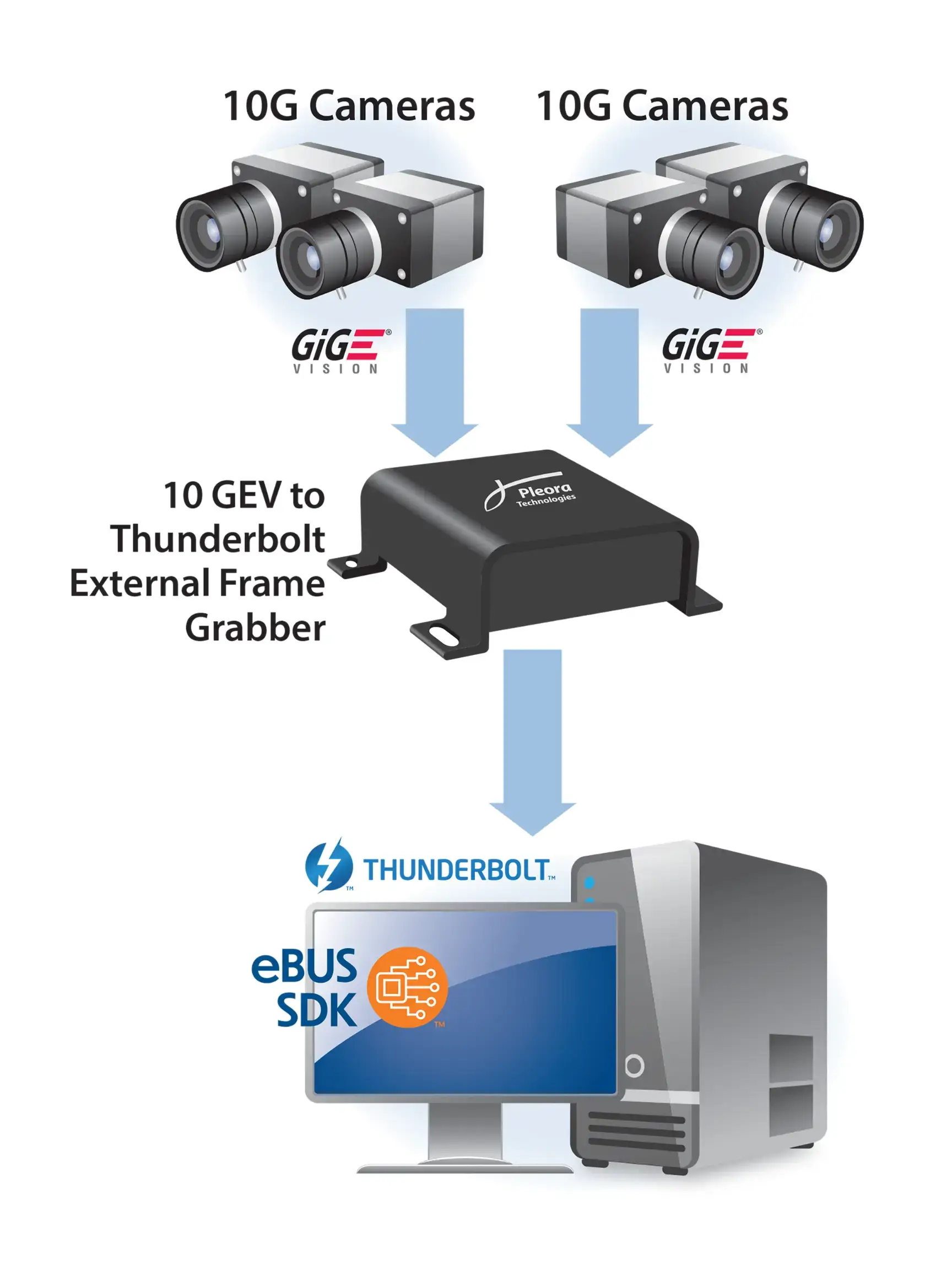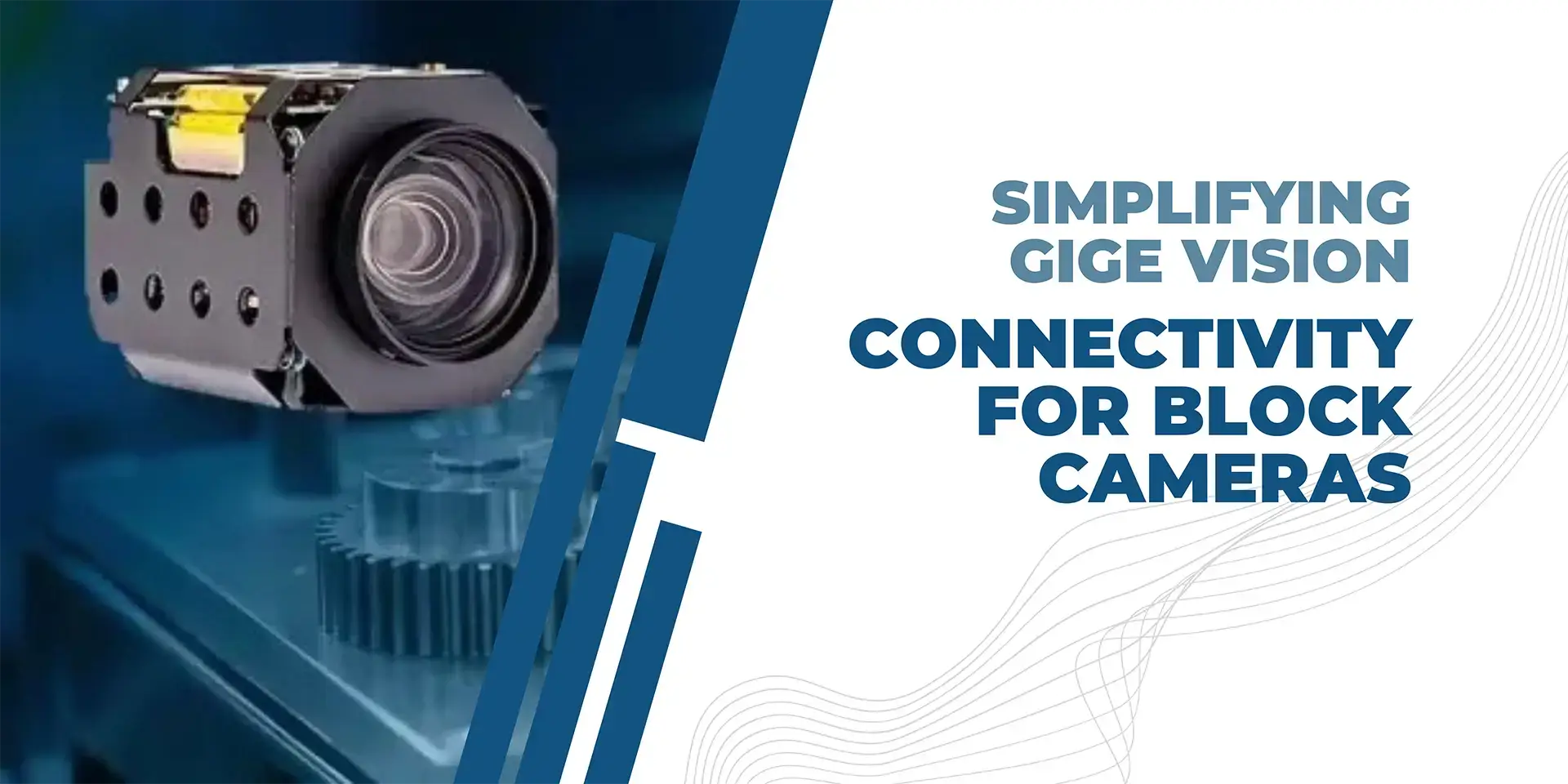GigE Vision is the most common transport layer standard in the machine vision industry today, but as bandwidth increases there are key processing challenges to consider for device designers and system integrators.
To understand the challenge requires a brief overview on the basics of the GigE Vision standard. GigE Vision is based on the User Datagram Protocol (UDP) from computer networking to ensure low latency transmission, and integrates a packet resend mechanism to guarantee delivery for processing, analysis, and recording.
Leveraging UDP as the GigE Vision transport mechanism does limit optimizations that can be performed on the network interface cards (NICs). NIC vendors have set a maximum packet size of 9 KB, and the onboard offload engines are built for Transmission Control Protocol (TCP) transport. As GigE Vision throughputs increase, packets must be depacketized, assembled into a frame, and copies to memory packets by the CPU for further processing, analysis, display, and recording.
This results in three copies of data, leading to unwanted CPU consumption and added latency. Installing a GigE Vision driver on the NIC reduces this to two copies, but as rates hit 5 Gbps this can result in CPU utilization spikes and lost data. In addition, several packets must be buffered to ensure all data is received, resulting in further memory consumption and added latency. These problems are prevalent with GigE Vision cameras streaming at 5 Gbps (or higher) and much more common when operating at 10 Gbps.
As GigE Vision evolves, the GigE Vision 3.0 standard leveraging RDMA over Converged Ethernet (RoCEv2) ensures image data is copied directly from the device into system memory on the host. This will solve the issue for high-speed GigE Vision cameras (>5Gbps), however excessive CPU load due for existing GigE Vision 1.x and 2.x devices reduces system reliability and processing accuracy.
To overcome this issue, Pleora is demonstrating a new GEV to Thunderbolt external frame grabber at Vision Stuttgart 2024 (Alfred Kärcher Hall 8, Booth #8B02).

The external frame grabber provides system manufacturers and integrators with cost and design flexibility advantages by converting GigE Vision cameras into native PCIe cameras that transport high-speed imaging and video data over the widely available Thunderbolt 3 capable USB 4 link via a USB-C connection. The cameras can also be used with a broader selection of smaller form factor, low-power computing platforms to help reduce system costs.
To optimize CPU usage the external frame grabber’s built-in DMA (Direct Memory Access) engine acquires and copies full image data into the memory of the host PC, freeing valuable processing resources for application tasks while avoiding packet loss. The solution simultaneously manages packet resend to ensure low latency and low jitter performance and improve reliability.
With this approach designers can leverage the cabling and multicasting advantages of GigE Vision imaging solutions for more complex higher-speed applications while taking full advantage of the capabilities of lower cost, smaller form factor CPU platforms for processing, analysis, display, and recording.
The off-the-shelf external frame grabber solution reduces system complexity for designers, particularly where inefficient NIC approaches add unnecessary integration and interoperability challenges while limiting performance of GigE Vision applications. Built-in GPIO functionality enables deterministic real-time, low jitter triggering and synchronization of other vision system components. In addition, IEEE 1588 capabilities ensure synchronization across a network of input devices and further triggering capabilities are offered via GigE Vision Action Commands.



